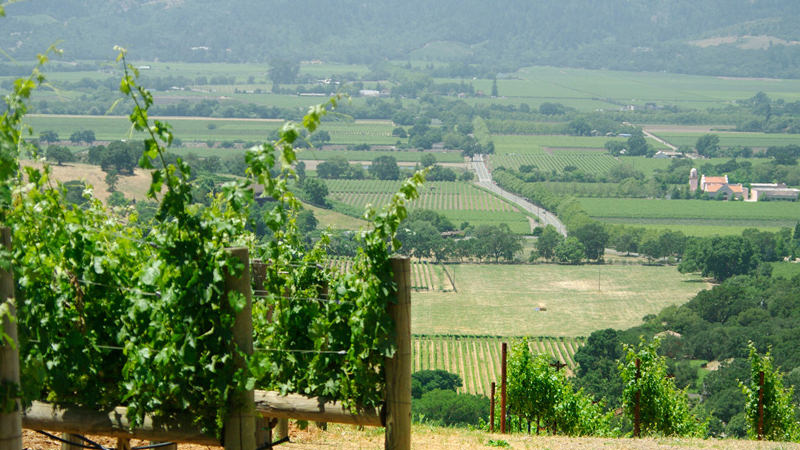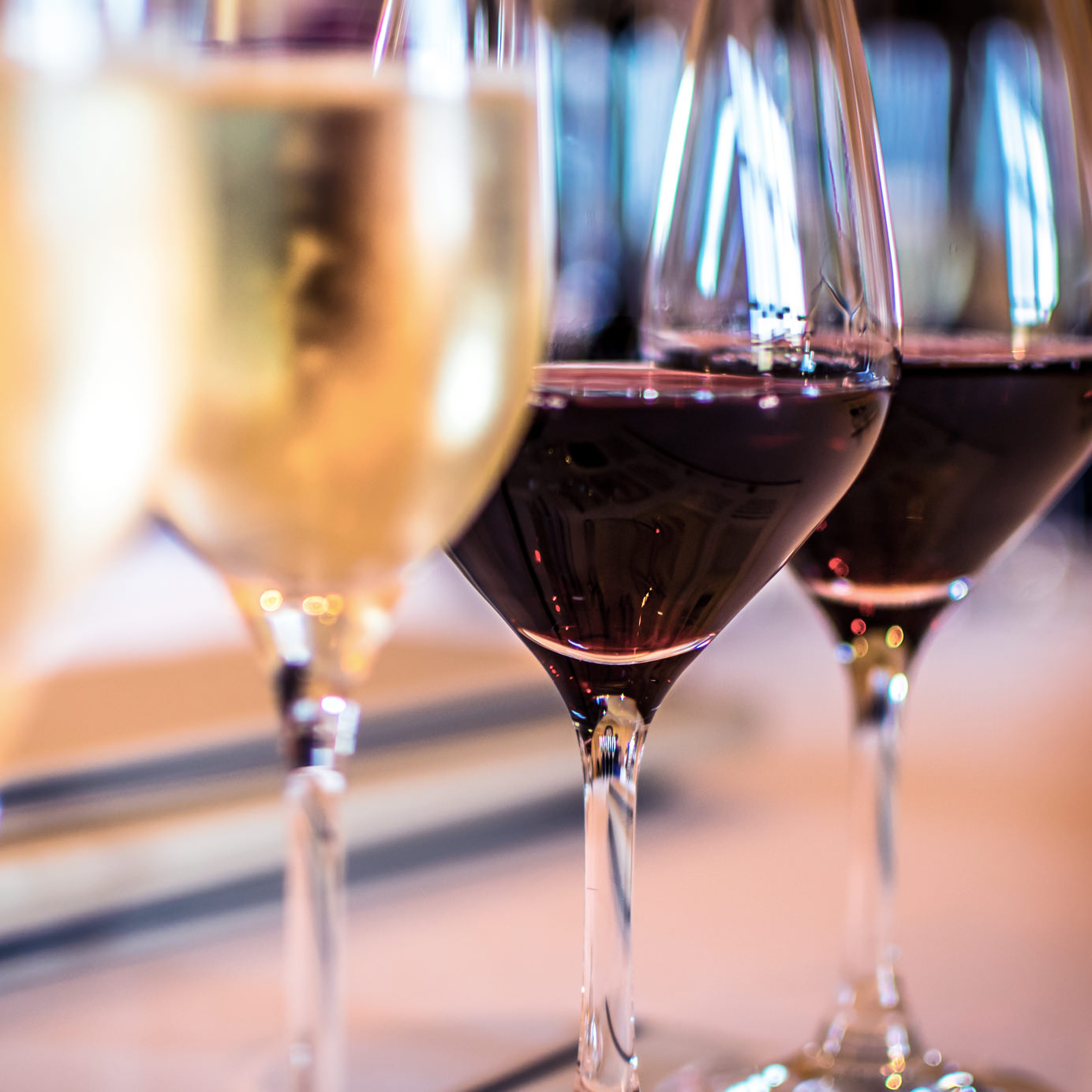This spring, a Fourmeaux 2016 Red Blend from VGS Chateau Potelle set a record for the highest barrel price of 2018 at Auction Napa Valley. A 10-case lot sold for $114,300, or just over $952 per bottle.
Auction Napa Valley was originally conceived in 1981 as a way for area vintners to give back to their community. Today it’s also a showcase where iconic Napa Valley wines like Screaming Eagle and Dalla Valle demonstrate their popularity. These legendary bottles are often referred to as “cult wines,” and they fetch top dollar — the Fourmeaux sale was the latest in a long line of record-breaking auctions.
The phenomenon of cult wines is not limited to Napa, of course. A similarly breathless reception greets bottles from Lebanon’s Chateau Musar, Spain’s Clos Mogador, and select others worldwide.
Yet Napa’s cult culture is distinct, driven by a confluence of historical, financial, and sociocultural factors. America’s economic development, agricultural trends, a shifting media landscape, and good, old-fashioned supply and demand all play a part.
In an industry irrevocably linked to weather, the cult of Napa wines is a perfect storm.
What Is a “Cult” Wine?
It depends on whom you ask.
Rob McMillan, EVP and founder of Silicon Valley Bank’s wine division, defines a cult wine as “a brand of exceptional strength and difficulty to attain.” The wines must be consistently great, year after year, he says. A cult wine is “a luxury good that if you could get easily, no one would want,” McMillan adds.
Of course, what constitutes luxury is also subjective. Most industry members consider luxury wines to be scarce, high-quality, and extremely pricey. The term “luxury” also tends to indicate factors like heritage, a proven track record of 20 years or more, a special place of origin such as a particular vineyard, and a sense of privilege and pleasure for the buyer. Dr. Liz Thach, Distinguished Professor of Wine & Management at Sonoma State University and author of the upcoming book, “Luxury Wine Marketing – the Art and Science of Luxury Wine Branding,” believes cult wines are a subset of luxury wines.
The simplest definition might come from Kale Anderson, VGS Chateaux Potelle’s winemaker. “A wine that has been proven to be very good over multiple vintages that develops a following quickly where the demand outpaces supply,” he says. “It’s a combination of factors — but it doesn’t happen if the wine isn’t good.”
“Anti-Marketing”
Cult wines are typically in such low production and high demand that advertising and traditional consumer outreach is unnecessary. Instead, word of mouth, especially among influential or moneyed crowds, builds enthusiasm and wait lists for popular wines. Tach calls it “anti-marketing.”
Auction Napa Valley, for example, connects winemakers with deep-pocketed consumers. It “creates the buzz with the right group of people,” Thach says. “It can propel an unknown wine into the limelight.”
Attendees might feel like they are part of an inner circle, or ahead of the curve, because they heard about a new bottle directly from the winemaker instead of reading it in a magazine or hearing it from a friend.
“Everyone knows what they are doing at Auction,” Pam Starr of Crocker & Starr says. “There’s not an immediate return, but… Auction Napa Valley builds relationships, enthusiasm, and excitement.”
Cate Conniff, the communications manager for Napa Valley Vintners, the organization that sponsors Auction Napa Valley, echoes the value of relationships. “Our guests meet the winemakers as they’re tasting their wines at the barrel auction, sit with vintners around tables at the live auction. Often these connections lead to long-held relationships and friendships,” Conniff says. “And for the collectors who procure these special wines at Auction Napa Valley, the story behind the wines becomes part of their story, to share with friends and family often over the course of many years.”
“Would the cult thing have happened without Auction Napa Valley? I’m not sure,” Starr says.

Perfect Storm
A paradigm shift took place in the 1990s, and, as a result, Napa winemakers began developing wines with a radically different character from those of the 1980s. According to McMillan, some of that had to do with the replanting that took place due to phylloxera in the ’80s and ’90s.
As a result, the region embraced high-pH modernism, terroir, and small production. Technical aspects like texture, weight, depth, and aromas changed, as did “really everything in terms of wine quality and winemaking style,” according to Jeff Smith, founder of Hourglass Winery. “Their flavor profile changed from their predecessors. In a classic economy of supply and demand, desirability compounded that.” The Napa Valley wines created in the 1990s had “mystique,” Smith says, and “desirability is the core of cult mentality.”
For Smith, eight wines in particular drove the movement. They are Abreu, Araujo, Bryant, Colgin, Dalla Valle, Grace, Harlan, and Screaming Eagle.
The American economy was also booming in the 1990s, so many buyers had cash to spend. Critics such as Robert Parker spoke to these new wine consumers by championing a numerical system of rating wines, which was easier to understand than floral tasting notes or Old World classifications.
“Robert Parker had a great effect on Napa Valley, he’s been a champion for the region,” Smith says. He adds, however, that Parker “had more impact when criticism was consolidated and there were fewer voices.”
“In the ’90s the scores were leading the way,” Starr says. “Wine collectors turned to Robert Parker, Steve Tanzer, and Wine Spectator, who were giving scores to wineries that were doing something new. It drove collectors to return to Napa to see what was going on here.”
The first time Starr heard the term “cult wine” was at Spottswoode Winery in the 1990s. Then as now, it was associated with the unattainable.
“You didn’t know what it tasted like, but you could buy it and resell it,” Starr says.
High retail prices are a hallmark of cult wines, but the real money is in the secondary market. Auctions provide opportunities to resell wines from cult producers at exponentially higher prices.
Auction Napa Valley propels and maintains the Napa cult wine phenomenon. “If you go back to when these wines were first establishing a market presence, in the ’90s and 2000s, Auction Napa Valley was a platform, a springboard for these wines,” Smith says. “It helped put the wines on the map and created mystique.”
Price of Fame
While the economics of scarcity do generate consumer enthusiasm for wines, Napa insiders say that’s half the story. There are hard costs associated with making cult wines in Napa, especially small-production Napa Valley Cabernet Sauvignon.
When Smith’s family family moved to Napa in the 1960s, you could buy an acre for $2,000, he recalls. Now that same acre may go for $500,000 to $1 million. Grapes might now cost you anywhere from $5,000 to $10,000 per ton. And, if you’re buying grapes from a top vineyard such as the legendary To Kalon, you may be paying as much as $40,000 per ton.
There are high labor costs associated with farming, too. Smith estimates the grape clusters at Hourglass might be touched anywhere from 15 to 18 times throughout the growing cycle, from pruning to spraying to leaf-removal canopy management to picking blocks multiple times.
Most of Napa’s cult wines, such as Harlan and Colgin, are aged in French oak barrels. These can cost $1,200 to $1,500 per barrel.
Tim Martin, co-owner of Tusk in Oakville, Calif., mentions that, while large wineries can negotiate, small-production operations have no opportunities to save money via scalability. Every year, he says, everything costs more.
Additionally, while winemakers may whimsically refer to themselves as glorified farmers, these days technology plays an important role. If you want only perfect fruit going into your fermenters, Anderson says, you will likely invest in a $250,000 sorter with optical scanning. Smart tanks can connect to winemakers’ personal devices via cloud technology so they can “micromanage” the process on their phones and get the profile and styles they want.
Finally, over-the-road tractors start at $500,000. Drone technology is increasingly popular in the Bay Area as well, used by forward-thinking wineries for spraying and mapping. Prices for complete, ready-to-fly professional agricultural drone systems range from $1,500 to well over $25,000.
Future of Cult Wines
Much of the industry no longer likes the term “cult,” saying it implies excessive publicity or exceptionally high prices. Many vintners would rather be perceived as “authentic” than “hyped.”
Some analysts believe cult wines will never go away. According to McMillan, young consumers will simply replace older ones, spending their hard-earned money on labels like Chateau Montelena and Ashes & Diamonds.
But Martin is concerned. Many buyers of cult Napa wines are in their 70s, he says. Their kids may not want to buy their parents’ brands, preferring to forge their own paths and find their own favorites.
Immeasurable ink has been spilled analyzing the buying power and preferences of millennial consumers. They drink less than their parents, studies say, and opt for beer, wine, and spirits in equal measure. Thach believes younger wine consumers also hold different values from their parents, caring about environmental sustainability and responsible business more than historic labels.
Napa winemakers are wise to adjust their outreach to appeal to new generations of consumers, McMillan says, by embracing social media and highlighting environmental and social responsibility. Auction Napa Valley, for example, donates to 25 local nonprofits and has strategic initiatives dedicated to community health and children’s education. These are powerful message points for conscientious consumers of any age.
So long as consumers want what they can’t have (new iPhones, Fenty cosmetics), the appeal of cult wines isn’t going anywhere. Napa winemakers simply have to assess conditions where they are, versus where they’re heading.
